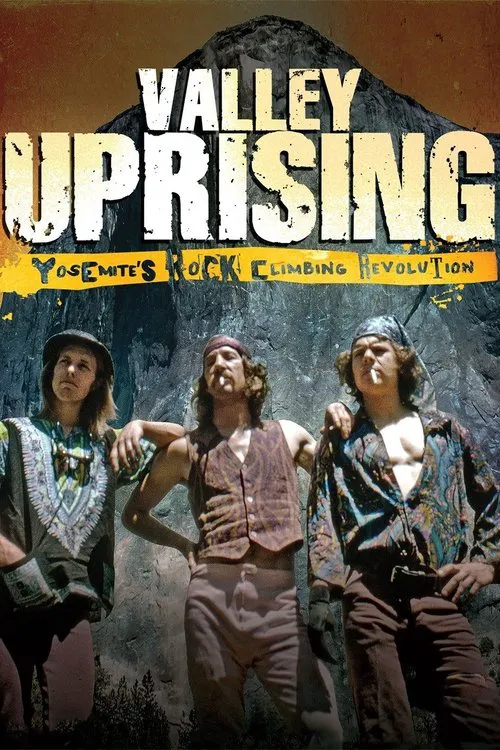Valley Uprising

Plot
In the late 1960s and early 1970s, Yosemite Valley was a place of great change and upheaval. As the counterculture movement swept across the United States, young climbers in California's National Park were creating a unique and free-spirited community centered around rock climbing. The era was marked by an explosion of innovation and technique on the park's iconic cliffs, particularly El Capitan, Half Dome, and Sentinel Rock. The movie "Valley Uprising" delves into this pivotal moment in climbing history, showcasing the pioneering efforts of individuals such as Royal Robbins, Joe Boysaw, and Yvon Chouinard. These pioneers, often dubbed 'The Original Four,' played a crucial role in shaping the early days of rock climbing in Yosemite Valley. They drew upon their skills as climbers, engineers, and adventurers to push the boundaries of what was thought possible. As the movement grew, the community of climbers established its own set of unwritten rules, values, and codes of conduct. They shared food, gear, and knowledge of the park's best climbing spots, creating an environment of camaraderie and cooperation. It was a time of unbridled creativity, with climbers constantly inventing new rope systems, harnesses, and climbing techniques. One of the central figures in the film is Lynn Hill, 'The Queen of El Capitan.' This pioneering climber was among the first women to tackle some of Yosemite's most daunting routes. With her determination, grit, and unyielding dedication to climbing, Hill paved the way for future generations of female climbers. However, not everyone was supportive of the climbing community. The National Park Service (NPS), with its conservative values, often clashed with the free-spirited nature of the climbers. NPS rangers were often seen as adversaries, who would issue citations and seize equipment from climbers for minor infractions. The tension between the NPS and the climbing community simmered beneath the surface, with many believing the NPS's strict regulations stifled innovation and creativity. This conflict reached a boiling point with the formation of the 'Yosemite Climbing Association' (YCA). Composed of climbers, the YCA fought tirelessly to establish formal recognition and representation within the NPS. They pushed for access to previously restricted areas and sought to protect the rights of climbers, while also working to maintain the fragile ecosystem and ensure the long-term sustainability of the park. In the latter half of the film, the focus shifts to the legendary climbing figure, Alex Honnold. A fearless and unorthodox climber, Honnold made headlines for his record-breaking ascents of El Capitan and Big Rock. The film culminates in a recreation of Honnold's most infamous feat: scaling El Capitan without ropes. This thrilling sequence of events is an exhilarating reflection of Honnold's unyielding determination and willingness to push the limits of human potential. Throughout the film, the 'Valley Uprising' theme is echoed time and again. The pioneering spirit, creativity, and unbridled passion of the Yosemite climbing community were hallmarks of a truly pioneering era. They embodied the essence of American counter-culture: free-spirited, rebellious, and constantly striving to achieve the impossible. Over the course of the film, it becomes clear that the legacy of the Yosemite climbers has had a profound impact on modern climbing culture. Their innovative techniques, unrelenting dedication to the craft, and unwavering passion for rock climbing have paved the way for countless generations of climbers who have followed in their footsteps. In the end, "Valley Uprising" pays tribute to the trailblazing individuals who transformed the world of rock climbing. By highlighting their struggles, triumphs, and contributions, the film serves as a testament to the transformative power of human ingenuity and the enduring legacy of a truly remarkable group of individuals.
Reviews
Recommendations




